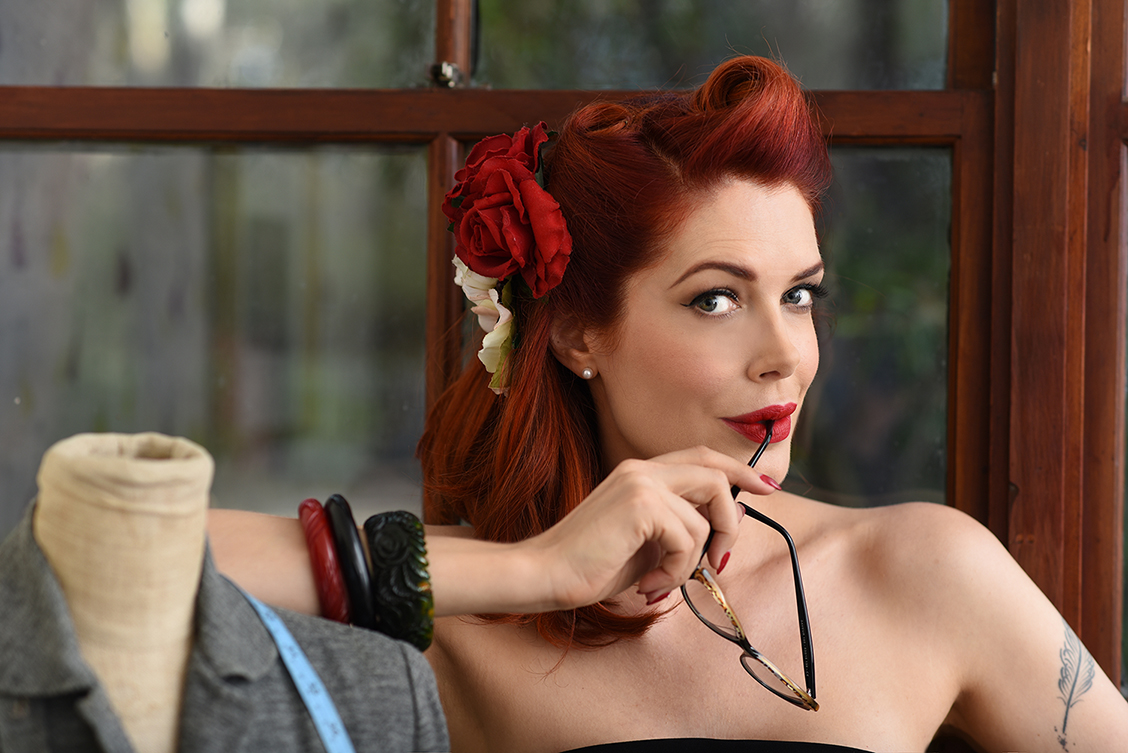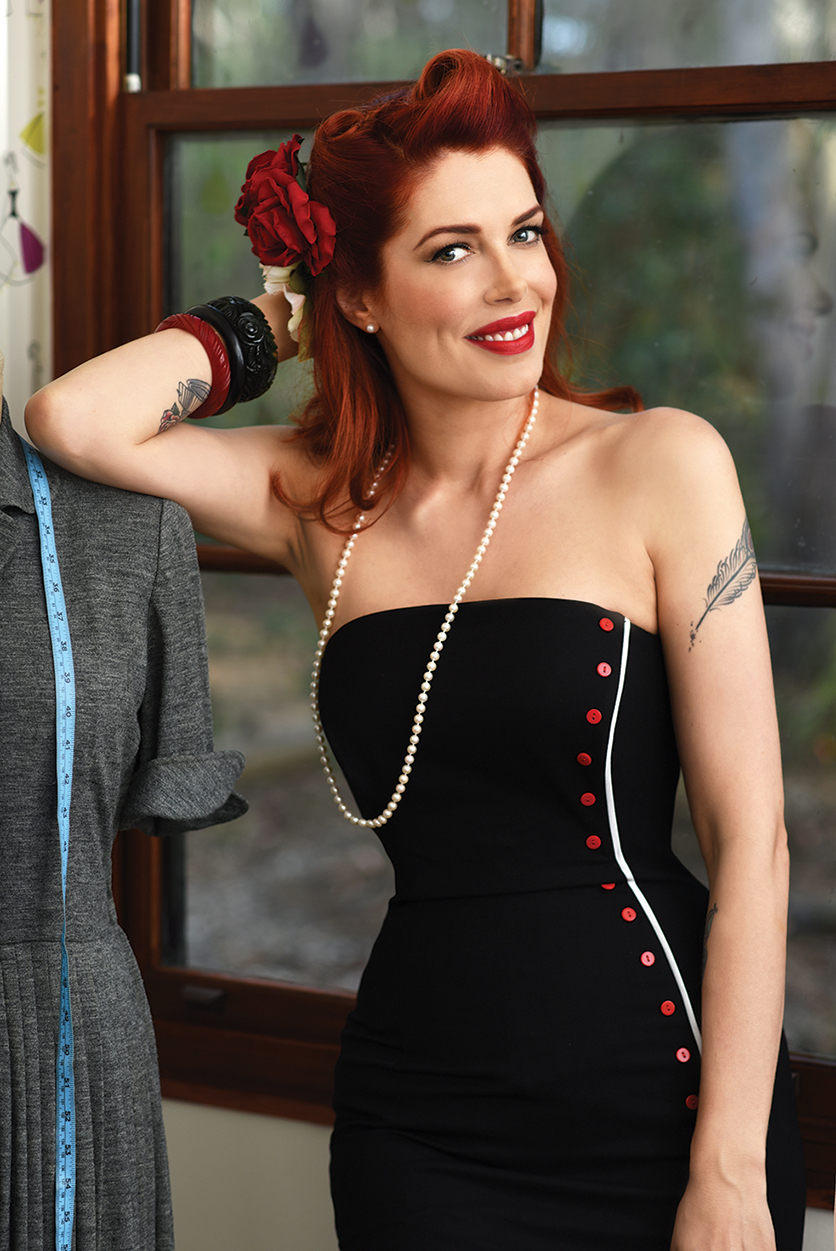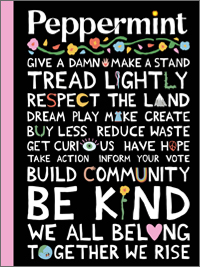
Sewing Vintage with Tara Moss
Best-known as an author, advocate and all-round action woman, Tara Moss can now add vintage blogger and host of a Youtube channel – Sewing Vintage with Tara Moss – to her resume. We caught up with Tara to ask her about her passion for sewing, the exploration of typically gendered roles and why she feels it’s crucial to rediscover traditional skills.
What led you to take up sewing?
Just over a year ago I made a pact with myself to learn to sew. It was a vital life skill I lacked, and I had come to realise – a little overdue – how much I needed to learn. Clothing rarely fits me without personalised tailoring, as I don’t have a ‘standard’ body shape (who does?) and I always had to farm out the tailoring and mending, and in some cases I just wore things that didn’t fit as well as they should and eventually ended up collecting dust at the back of the closet. I decided enough was enough. It was time to learn how to make and mend my own clothes and to become self-sufficient and less wasteful.
As a complete beginner, what did you find most challenging?
It took me a while to understand patterns and garment construction. I still have much to learn, but even reading basic patterns was like learning a different language at first. I have a solid sense of clothing and design after decades of being around the fashion industry, but now I have a much better sense of how different garments and effects are achieved and what goes into the construction and sewing.
You’ve mentioned it may surprise those familiar with your ‘action woman’ persona to learn that you’ve taken up sewing. Why do you feel it’s important that we embrace both traditionally male and female pursuits?
Whether we identify as male, female or neither, we are all whole human beings, and I believe we benefit from exploring all aspects of ourselves and the world we live in. We can be leaders, and also caring. Progressive and also crafty. People of action and also quiet moments. There are many ways to be a human being, and a lot of traditional skills – those traditionally allotted to men or women – are absolutely vital to life and to our survival.
On your Youtube channel, you point out that cheap plastic sewing machines are almost impossible to repair. Does a ‘buy less, buy better’ mentality extend into other areas of your life? In what way?
Buy less, buy better should absolutely be a motto and philosophy carried through to all aspects of our lives. I want to buy things that can be repaired. I want to learn those skills.

Learning to mend, rather than throwaway, neatly complements the sustainability of buying vintage fashion. Why was it important to you to become more self-sufficient?
I have always been a big believer in self-sufficiency, and as a woman I have been incredibly self-sufficient except in regards to sewing, mending and some domestic skills. It’s hard to wear and love vintage without being about the mend and repair, so that really highlighted the skills I lacked, but those skills are important across the board, no matter what kind of clothes you wear or how you live your life.
How did learning to sew affect the way you look at clothing?
I have a lot more to learn, but I can now identify different construction techniques, stitches and fabrics, and that makes identifying quality much easier. I now look on the inside of clothes, and pay much more attention.
Has it influenced your buying decisions?
Absolutely. Once you have a real sense of garment quality and what goes into the process, and you really pay attention to the lovingly hand stitched hem or finish, you’ll never look at most factory-made modern clothing the same way again.
What have been the most rewarding moments of your sewing journey? Do any particular learnings or mistakes spring to mind?
Learning how to hand stitch a hem, which we show in Episode 9 of Sewing Vintage with Tara Moss, has been one of my favourite moments. Last year I completed a lovely custom pencil skirt from a pattern I amended, and I basically ruined it when I machine stitched the hem at the end. Well, it didn’t ruin it, but I could see right away that it brought the whole garment down, but I just didn’t know how to hem properly. I didn’t know any other way, because I was such a novice. After that, hemming my first dress with a beautiful, almost invisible hand stitched hem felt great.
What response have you had to your sewing school?
The sewing community has been so welcoming and encouraging, and I really appreciate it. Those who are newbies like myself have told me it has really helped them too, so I hope there is something for everyone, whether they are learning the basics, picking up couture hand sewing techniques or just want a little added encouragement to get back to sewing. It’s been a lovely journey so far.
What’s next for Sewing Vintage?
I am working on some sewing diaries at the moment – making 1940s land Army overalls, and a boned mid-century bodice – and I will be interviewing more wonderful experts in the coming months as well. I’m particularly thrilled to be visiting costume designer Marion Boyce at her Melbourne studio to ask her about her designs for Miss Fisher’s Murder Mysteries, The Dressmaker and more. I hope your readers will consider subscribing and following the journey so we can continue to bring these crafts and skills to a wider audience. I have great respect for the seamstresses, tailors, costumers and sewists out there, and I want their skills to be known and remembered.
Tara Moss is the host and producer of Sewing Vintage with Tara Moss, a vintage blogger at VictoryLamour.com and is the Patron of the Australian Sewing Guild.
–––––––––––––


